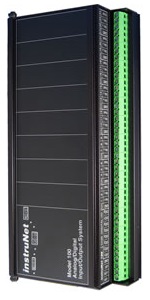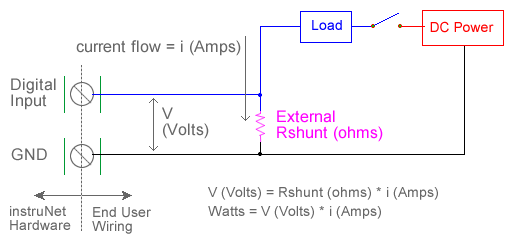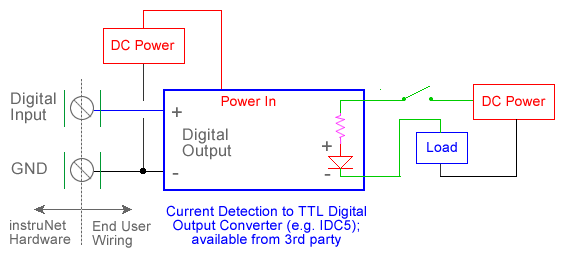DIGITAL CURRENT ON/OFF SENSE (e.g. 0-20mA) The following instruNet hardware provides digital input channels that can sense on/off current with the help of an external non-isolated shunt resistor, or an external Isolated Current-to-Digital-Output converter; both of which are available from 3rd parties.
Working with Digital I/O In the typical case, a logic 0 corresponds to 0 to 0.8Volts, and a logic 1 corresponds to 2V to 5V. For details on the number of channels and the characteristics of each, click on the model numbers below the above pictures. For details on working with digital i/o channels, click here. Measurement via non-isolated external shunt resistor The instruNet digital inputs can be driven with an external shunt resistor that converts current to a digital voltage. For example, to convert 20mA to 3.0V, one would use a 3.0V / 0.02A = 150ohm resistor. This would then dissipate 3V * 0.02A = 0.06 Watts when current is flowing 1. Subsequently, in this case, one might use a resistor rated for 0.25Watt or 0.5Watt to maintain a reasonable resistor temperature when current is flowing. Notice in the below drawing that the instruNet ground is connected to the external shunt resistor and is also connected to the external power supply ground. It is important that one wire in this manner in order to produce the correct voltage at the digital input pin.
3rd Party Isolated Current-to-Voltage Converter The instruNet digital inputs can also be driven with an external isolated current to voltage converter, available from a 3rd party, as illustrated below. One diffrerence between this technique and that which is described above is the external end user power supply here does not need to share the same ground as the instruNet hardware, which is why it is referred to as "isolated".
|



